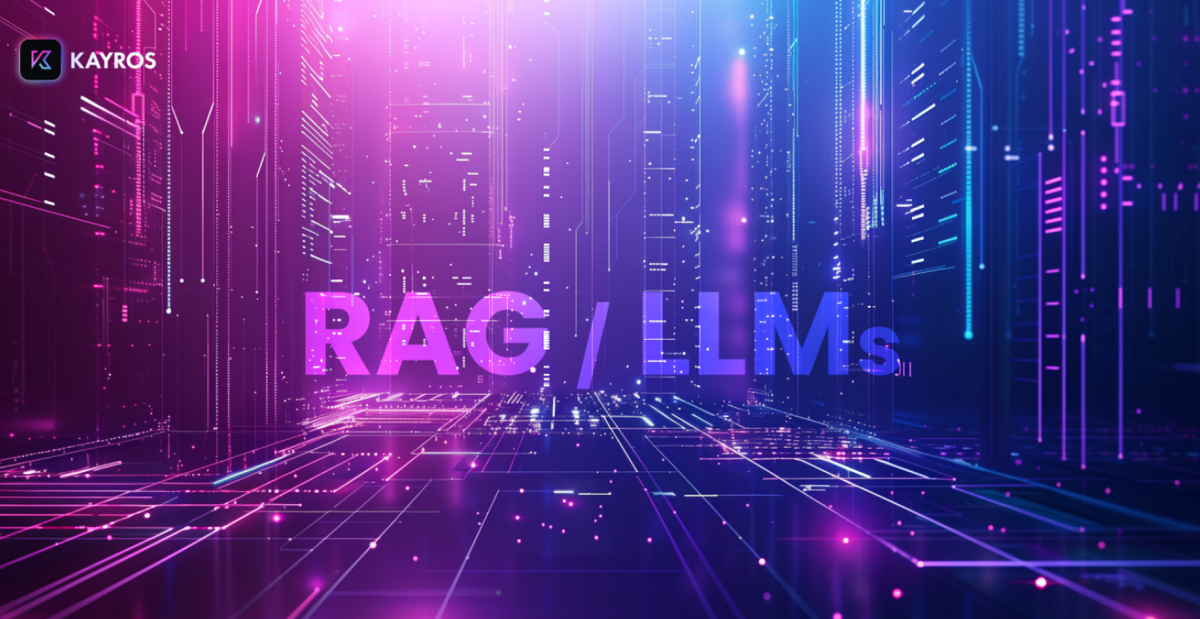The world of AI is booming, with Large Language Models (LLMs) like ChatGPT or Gemini grabbing headlines. Businesses are naturally curious about how AI can improve their operations and give them a competitive edge. But a big question remains: can these AI assistants be trusted to be accurate? After all, LLMs can sometimes make up information that sounds good, but isn't quite true.
In our last article, we explored the differences between AI chatbots, assistants, and agents, highlighting the power of training them on your own data. Now, let's dive into how we can achieve this with Retrieval-Augmented Generation (RAG), a technology that tackles the accuracy concerns with LLMs.
LLMs: superpowers with limitations
Imagine a super-powered brain trained on mountains of text and code. That's basically an LLM, like ChatGPT or Gemini! These impressive models can write human-quality text, translate languages, and answer your questions in an informative way. But here's the catch:
- LLMs don’t know your data : powerful as they are, they are limited by their training data. While some LLMs, like ChatGPT and Gemini, can access new information, others cannot, making them potentially inaccurate or outdated for evolving topics.
- Business applications need your data to be effective : LLMs lack access to your specific business data, which is crucial for business tasks like answering customer queries, summarizing reports or analyzing marketing data. Business applications need to leverage your unique data to be truly effective.
- Potential for hallucination: as mentioned earlier, LLMs can sometimes fabricate information that sounds plausible but isn't true. This is a major concern for businesses where accuracy is crucial.
Introducing RAG: the data booster for LLMs
Think of RAG as a knowledge booster for LLMs. It combines the strengths of LLMs with the wealth of information stored within your own business data. Here's how it works:
- Finding the right info: When you ask your RAG-powered assistant a question, it first searches through your specific data sources, like customer records, product manuals, or industry reports.
- Building context: RAG then takes the information it finds and combines it with your original question. This gives the LLM a richer understanding of your specific needs.
- Smarter responses: With this extra context, the LLM can generate a more accurate and informative answer that's based on both your question and your company's data.
RAG: Powering up business AI
RAG offers several benefits for building business-specific AI applications:
- Spot-on answers: by using your data, RAG ensures the LLM's responses are factually correct and directly relevant to your business. This reduces the risk of made-up information and leads to more trustworthy results.
- Industry expertise: by integrating your domain-specific data, RAG allows LLMs to handle tasks that require specialized knowledge of your industry.
- Cost-effective and flexible: RAG is a more cost-effective solution compared to building custom AI solutions from scratch. It leverages pre-trained LLMs and requires fewer resources. Plus, RAG's knowledge base can be easily updated with your latest data, keeping your AI assistant current.
RAG vs. Large context windows: complementary technologies
With the recent buzz around super-large "context windows" in LLMs (like the 2 million tokens in Gemini 1.5), you might wonder if RAG is becoming outdated. Not exactly! Let's break down what these context windows are: imagine an LLM is reading a book. A normal context window might be a few sentences, but a large context window allows the LLM to consider the entire book, or even multiple books at once! This is measured in "tokens," which are basically the building blocks of information the LLM processes - like words, punctuation, or even parts of a word.
So, why wouldn't large context windows replace RAG? Here's the thing:
- More power, more cost: these super-large windows require a lot of computing muscle, which can be expensive and slow things down. This might not be ideal for businesses that need fast and affordable AI solutions.
- Scaling challenges: Imagine trying to search through a massive library all at once! Large context windows can struggle to handle enormous amounts of data efficiently. RAG, on the other hand, is designed for business use and can handle different data sources smoothly.
- Reliable and transparent: RAG is like having a librarian who can tell you exactly which book a piece of information came from. This is important for situations where accuracy and being able to trace information back to its source are crucial.
- Smarter agents: RAG can search through multiple sources at once, allowing AI assistants to consider diverse perspectives and deliver well-rounded answers.
Think of it like this: large context windows give LLMs a broader view of the world, while RAG helps them use your company's specific knowledge effectively. They work together to create powerful and trustworthy business AI.
Building business AI with confidence
By incorporating RAG into your business AI strategy, you can leverage the power of pre-trained LLMs without worrying about made-up information. Your unique data becomes the foundation for training the LLM, resulting in a business-specific AI assistant that's accurate, efficient, and tailored to your specific needs. This approach is quickly becoming the standard for building reliable and trustworthy business AI applications.
We hope this breakdown of LLMs and RAG has shed light on the exciting world of AI. Stay tuned for the next article in our AI Fundamentals series!


